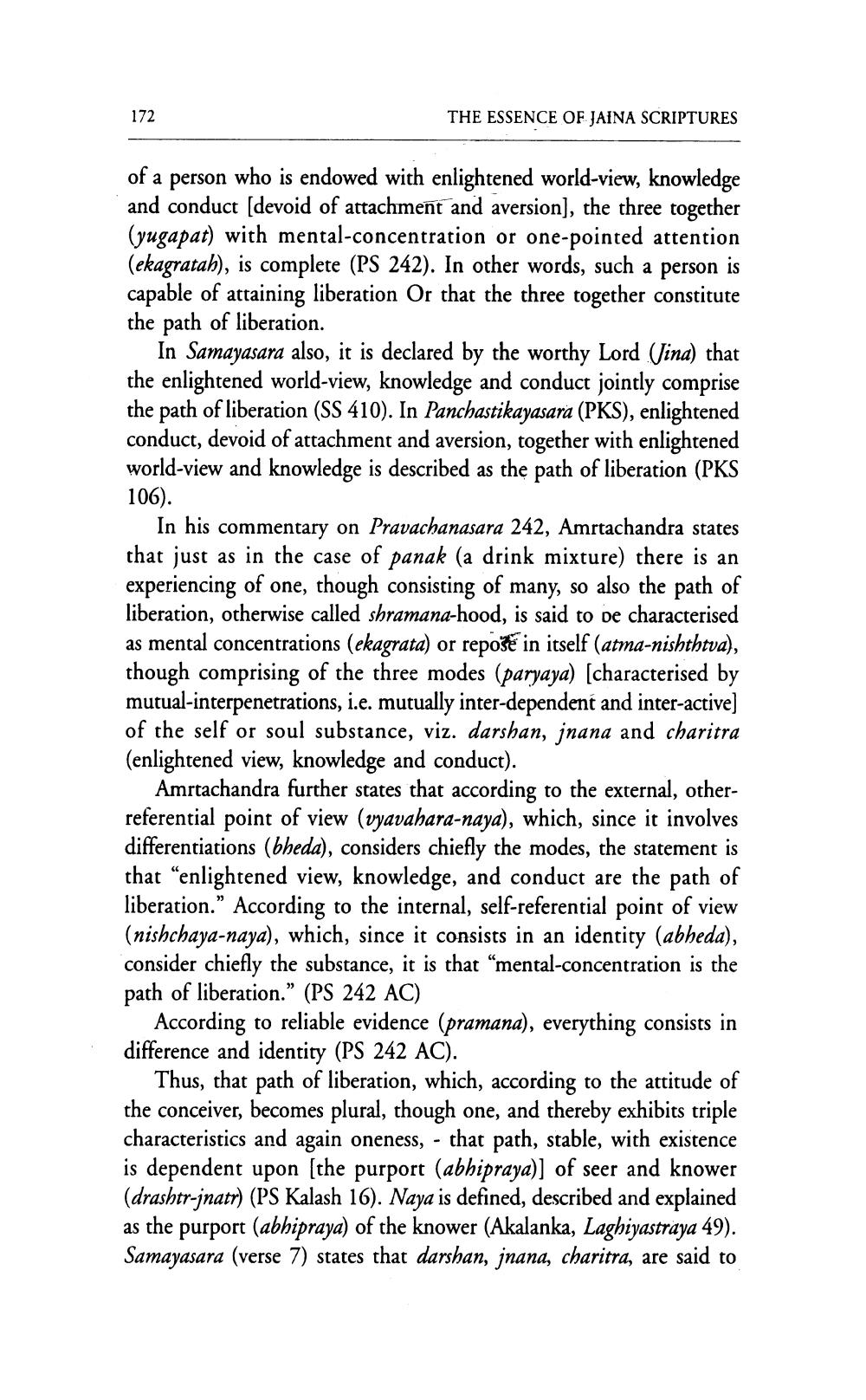________________
172
THE ESSENCE OF JAINA SCRIPTURES
of
a person who is endowed with enlightened world-view, knowledge and conduct [devoid of attachment and aversion], the three together (yugapat) with mental-concentration or one-pointed attention (ekagratah), is complete (PS 242). In other words, such a person is capable of attaining liberation Or that the three together constitute the path of liberation.
In Samayasara also, it is declared by the worthy Lord (Jina) that the enlightened world-view, knowledge and conduct jointly comprise the path of liberation (SS 410). In Panchastikayasara (PKS), enlightened conduct, devoid of attachment and aversion, together with enlightened world-view and knowledge is described as the path of liberation (PKS 106).
In his commentary on Pravachanasara 242, Amrtachandra states that just as in the case of panak (a drink mixture) there is an experiencing of one, though consisting of many, so also the path of liberation, otherwise called shramana-hood, is said to be characterised as mental concentrations (ekagrata) or repose in itself (atma-nishthtva), though comprising of the three modes (paryaya) [characterised by mutual-interpenetrations, i.e. mutually inter-dependent and inter-active] of the self or soul substance, viz. darshan, jnana and charitra (enlightened view, knowledge and conduct).
Amrtachandra further states that according to the external, otherreferential point of view (vyavahara-naya), which, since it involves differentiations (bheda), considers chiefly the modes, the statement is that "enlightened view, knowledge, and conduct are the path of liberation." According to the internal, self-referential point of view (nishchaya-naya), which, since it consists in an identity (abheda), consider chiefly the substance, it is that "mental-concentration is the path of liberation." (PS 242 AC)
According to reliable evidence (pramana), everything consists in difference and identity (PS 242 AC).
Thus, that path of liberation, which, according to the attitude of the conceiver, becomes plural, though one, and thereby exhibits triple characteristics and again oneness, - that path, stable, with existence is dependent upon [the purport (abhipraya)] of seer and knower (drashtr-jnatr) (PS Kalash 16). Naya is defined, described and explained as the purport (abhipraya) of the knower (Akalanka, Laghiyastraya 49). Samayasara (verse 7) states that darshan, jnana, charitra, are said to




